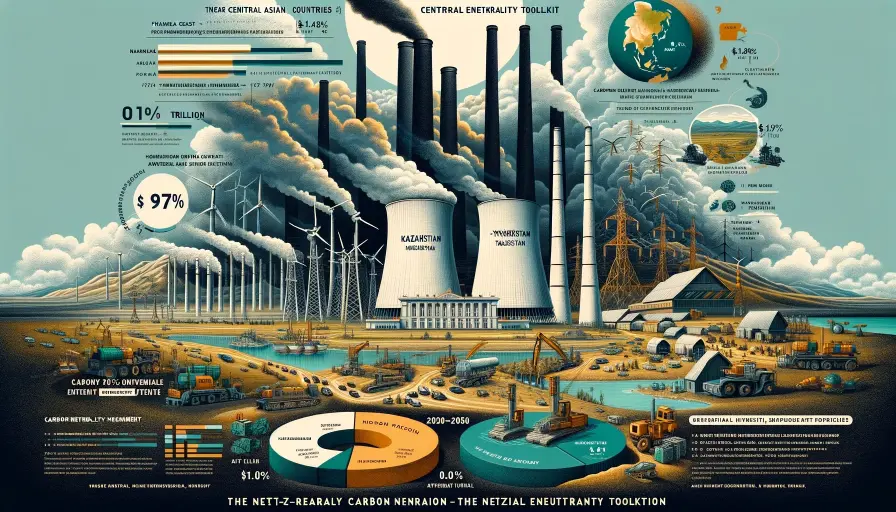The current debates in international relations view India and China as two rising Asian powers striving to reach their full potential. The ongoing war between Russia and Ukraine is at the center of attention in the international community. This conflict has stunned the global community and is an opportunity for the rising geopolitical adversaries India and China to form new partnerships with Central Asia. To get the better of each other, both want to foster geopolitical partnerships to secure energy reserves and essential natural resources such as uranium, coal, petroleum and gas to promote nuclear and security agendas.
Central Asia is the closest natural resource hub to both India and China. It is also one of the biggest producers and exporters of energy resources in the global energy market. The region is becoming a lucrative destination for rising nations such as India and China because of abundant natural resources such as gasoline, petroleum, coal, and pockets of mines and ores. The Ukrainian war has opened the door for Central Asia to sign international and geopolitical deals with rising international players.
The new deals fascinate geopolitical analysts such as Dr Ayjaz Wani, who is keenly interested in India-China-Central Asia relations. However, at the same time, we must create more awareness about these agreements’ environmental implications. The new power play among the rising geopolitical adversaries focuses solely on boosting their political and economic interests inspired by competing against each other. Climate change is a significant and common problem for humanity; each region needs to play an active role to ensure sustainable protection and development of the natural habitat. However, nations do not take any accountability for natural resource exploitation and their role in causing climate change.
Energy Resource Pockets in Central Asia
Prof. Mubarak Ateeq Sultan Alkuwaiti, of Al-Farabi Kazakh National University, Kazakhstan, specifies in his study on “The importance of the Central Asian region in energy security at the global level”, that energy reserves in Central Asia remain unmatched; the region generates and sells vast amounts of coal, uranium, oil, and gas in the international energy market. Over the years, countries in the region have become a vital addition to the global energy market; they trade with big economic countries like China, Russia and India, among others. The trade potential comprises high-valued resources such as petroleum, oil, coal, and uranium.
Alkuwaiti even highlights that the “hydrocarbon capacity in the region accounts for 5.5% of the world”, mainly in Kyrgyzstan, Tajikistan, Uzbekistan, and Kazakhstan, containing “20% of the world’s uranium reserve.” Both gas and coal are readily available in Central Asia; Kazakhstan is home to major coal mines. Alkuwaiti’s study shows that “Uzbekistan is among the top countries to produce and export gas.”
Sebastien Peyrouse, in the International Partnership for Human Rights 2022 report, stresses that Central Asia faces many environmental hardships, including air pollution, deforestation, smog and ecological disasters. The Central Asian governments have taken no actions to address these issues, lacking the conviction to address climate change and depleting ecological conditions. Instead, more resource-depleting deals are discussed without considering the ground reality.
The toll of politics on the environment
The recent military escalation between India and China in the last decade has resulted in a surge of regional geopolitical competition for energy and natural resources. Both nations turn towards Central Asia to establish fiscal and strategic ties to acquire natural resources to advance nuclear projects and objectives against each other. The exportation of resources is carried out through strategically planned initiatives such as Turkmenistan–Afghanistan–Pakistan–India Pipeline (TAPI); this is a geopolitical arrangement between these countries which would lead to gas export from the fields in Turkmenistan to India through Afghanistan and, Pakistan. According to the hydrocarbon technology think tank, a supply of “90 million metric standard cubic metres of natural gas a day” is promised through this initiative.
China promised the Central Asian nations, during the 2023 China-Central Asia summit held in Xi’an, Shaanxi Province, guaranteed assistance through new ventures and collaborations. China unequivocally conveyed that it wants an “energy advancement partnership” guaranteeing the development of the “line D of the China-central Asia gas pipeline” to elevate ties in oil and gas. The TAPI gas pipeline already promises to take a considerable chunk of gas daily from the area. The Chinese project assures even more exportation of gas from the region.
China’s rapidly growing directive for uranium to support its nuclear projects also requires cooperation with Central Asia. India, however, stands in the way; at the 2022 India-Central Asia summit, India proposed deeper connectivity to Central Asia via the north-south transport corridor, blocking the appeal for the Chinese project. India’s attempt to establish long-lasting connections is a geopolitical strategic play that limits China’s rise.
Who should be held responsible for the environmental damage?
Politics and summits are the mechanisms that should protect and promote the safeguarding of natural resources; instead, they are transforming into a means for enhancing national power and polluting the earth. Through the example of Central Asia, one must wonder whether politics and leaders genuinely want to preserve and help the environment or if all speeches and debates about climate are empty assurances to deceive people.
Who should be responsible for meditating and ensuring climate is taken seriously by the countries? The media houses? The United Nations? Civilians? You? Are these geopolitical summits and initiatives a means to bypass climate concerns in the name of promoting growth and prosperity? We must keep a close watch on the rising India and China and their upcoming development projects with Central Asia, or else our environment will pay the cost in the name of ‘cooperation’ and ‘connectivity’.
